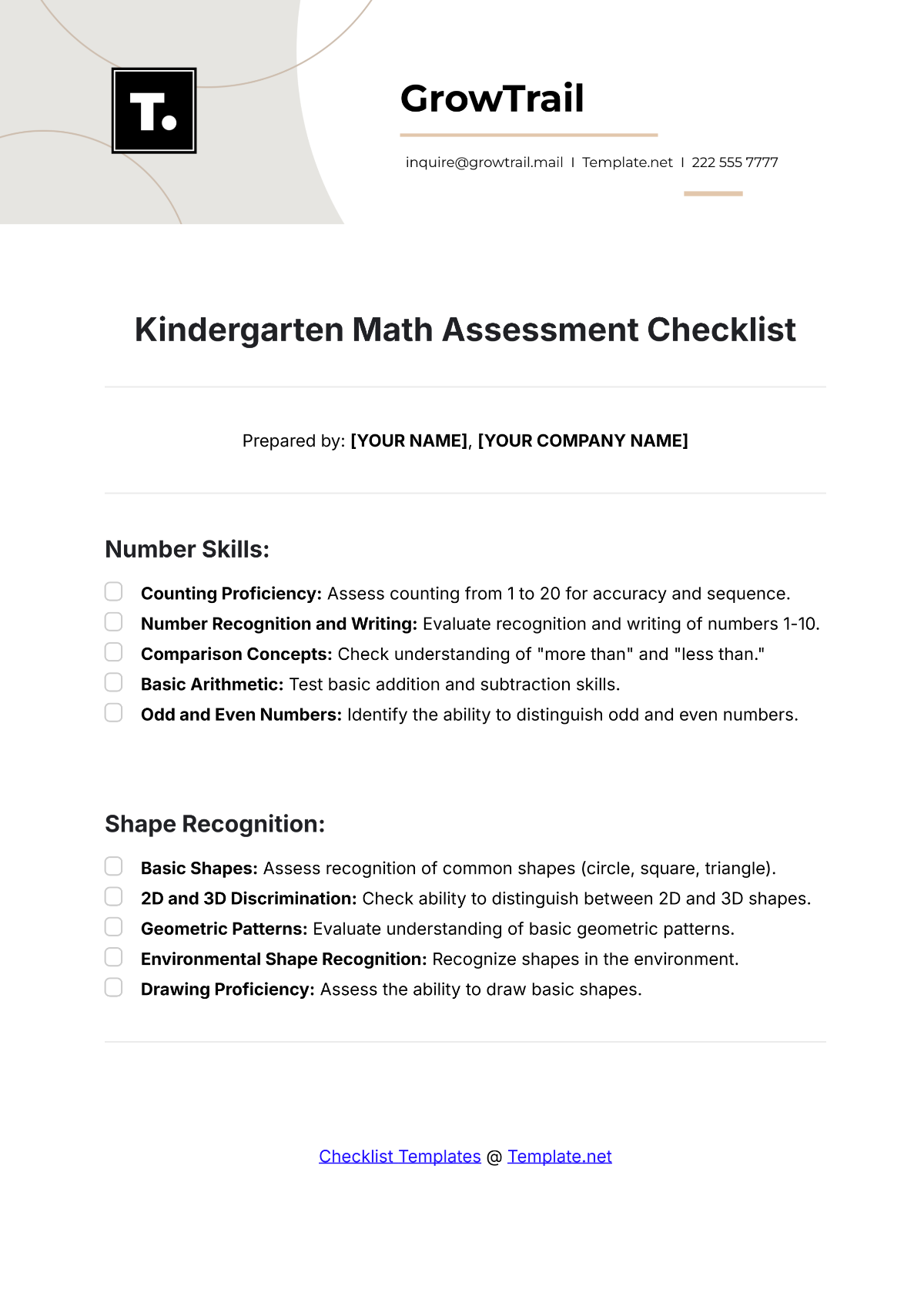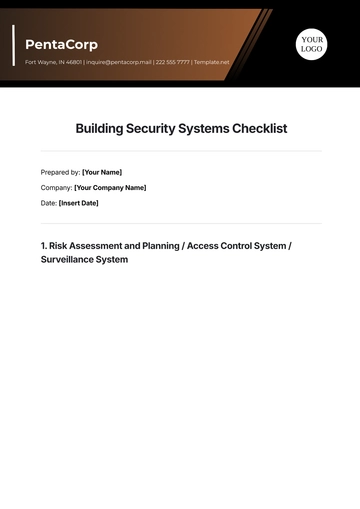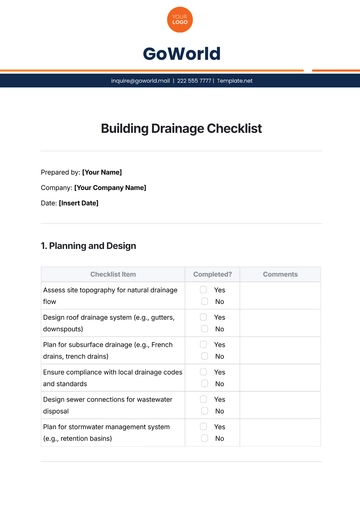Free Kindergarten Math Assessment Checklist

Prepared by: [YOUR NAME], [YOUR COMPANY NAME]
Number Skills:
Counting Proficiency: Assess counting from 1 to 20 for accuracy and sequence.
Number Recognition and Writing: Evaluate recognition and writing of numbers 1-10.
Comparison Concepts: Check understanding of "more than" and "less than."
Basic Arithmetic: Test basic addition and subtraction skills.
Odd and Even Numbers: Identify the ability to distinguish odd and even numbers.
Shape Recognition:
Basic Shapes: Assess recognition of common shapes (circle, square, triangle).
2D and 3D Discrimination: Check ability to distinguish between 2D and 3D shapes.
Geometric Patterns: Evaluate understanding of basic geometric patterns.
Environmental Shape Recognition: Recognize shapes in the environment.
Drawing Proficiency: Assess the ability to draw basic shapes.
- 100% Customizable, free editor
- Access 1 Million+ Templates, photo’s & graphics
- Download or share as a template
- Click and replace photos, graphics, text, backgrounds
- Resize, crop, AI write & more
- Access advanced editor
Unlock the potential of early mathematical development with our exclusive Kindergarten Math Assessment Checklist Template, available on Template.net. This highly editable and customizable tool streamlines the assessment process for kindergarten math proficiency. Utilize our Ai Editor Tool to effortlessly tailor this resource, ensuring precise tracking of each child's mathematical milestones.
You may also like
- Cleaning Checklist
- Daily Checklist
- Travel Checklist
- Self Care Checklist
- Risk Assessment Checklist
- Onboarding Checklist
- Quality Checklist
- Compliance Checklist
- Audit Checklist
- Registry Checklist
- HR Checklist
- Restaurant Checklist
- Checklist Layout
- Creative Checklist
- Sales Checklist
- Construction Checklist
- Task Checklist
- Professional Checklist
- Hotel Checklist
- Employee Checklist
- Moving Checklist
- Marketing Checklist
- Accounting Checklist
- Camping Checklist
- Packing Checklist
- Real Estate Checklist
- Cleaning Checklist Service
- New Employee Checklist
- Food Checklist
- Home Inspection Checklist
- Advertising Checklist
- Event Checklist
- SEO Checklist
- Assessment Checklist
- Inspection Checklist
- Baby Registry Checklist
- Induction Checklist
- Employee Training Checklist
- Medical Checklist
- Safety Checklist
- Site Checklist
- Job Checklist
- Service Checklist
- Nanny Checklist
- Building Checklist
- Work Checklist
- Office Checklist
- Training Checklist
- Website Checklist
- IT and Software Checklist
- Performance Checklist
- Project Checklist
- Startup Checklist
- Education Checklist
- Home Checklist
- School Checklist
- Maintenance Checklist
- Planning Checklist
- Manager Checklist
- Wedding Checklist
- Vehicle Checklist
- Travel Agency Checklist
- Vehicle Inspection Checklist
- Interior Design Checklist
- Backpacking Checklist
- Business Checklist
- Legal Checklist
- Nursing Home Checklist
- Weekly Checklist
- Recruitment Checklist
- Salon Checklist
- Baby Checklist
- Equipment Checklist
- Trade Show Checklist
- Party Checklist
- Hospital Bag Checklist
- Evaluation Checklist
- Agency Checklist
- First Apartment Checklist
- Hiring Checklist
- Opening Checklist
- Small Business Checklist
- Rental Checklist
- College Dorm Checklist
- New Puppy Checklist
- University Checklist
- Building Maintenance Checklist
- Work From Home Checklist
- Student Checklist
- Application Checklist





























